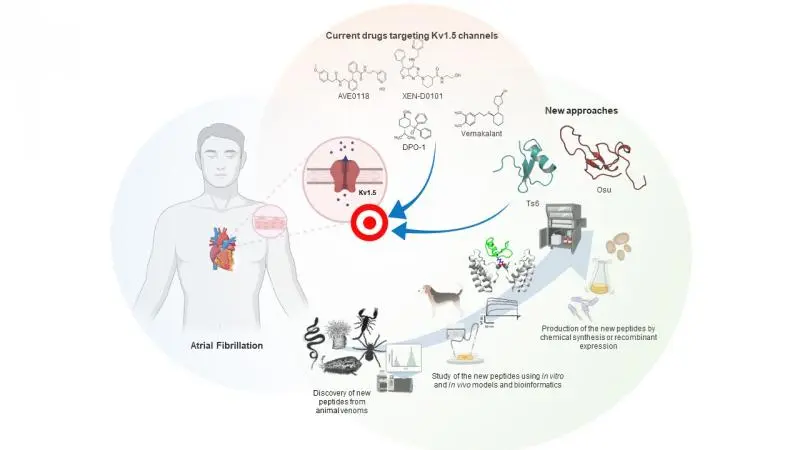
The human voltage gated potassium channel Kv1.5 that conducts the IKur current is a key determinant of the atrial action potential. Its mutations have been linked to hereditary forms of atrial fibrillation (AF), and the channel is an attractive target for the management of AF. The development of IKur blockers to treat AF resulted in small molecule Kv1.5 inhibitors. The selectivity of the blocker for the target channel plays an important role in the potential therapeutic application of the drug candidate: the higher the selectivity, the lower the risk of side effects. In this respect, small molecule inhibitors of Kv1.5 are compromised due to their limited selectivity. A wide range of peptide toxins from venomous animals are targeting ion channels, including mammalian channels. These peptides usually have a much larger interacting surface with the ion channel compared to small molecule inhibitors and thus, generally confer higher selectivity to the peptide blockers. We found two peptides in the literature, which inhibited IKur: Ts6 and Osu1. Their affinity and selectivity for Kv1.5 can be improved by rational drug design in which their amino acid sequences could be modified in a targeted way guided by in silico docking experiments. DOI: https://doi.org/10.3390/ph14121303, Webpage: https://encyclopedia.pub/18674